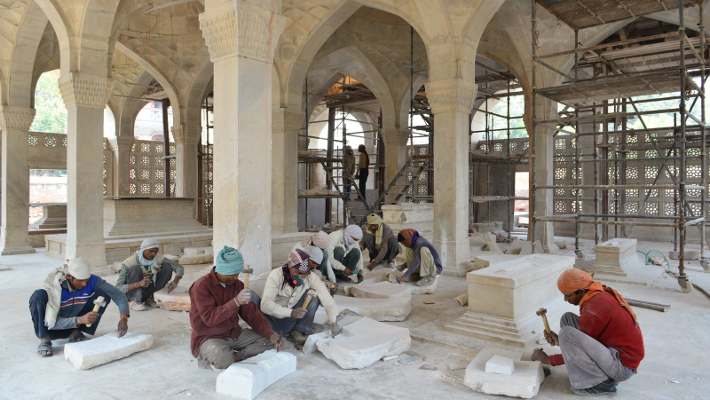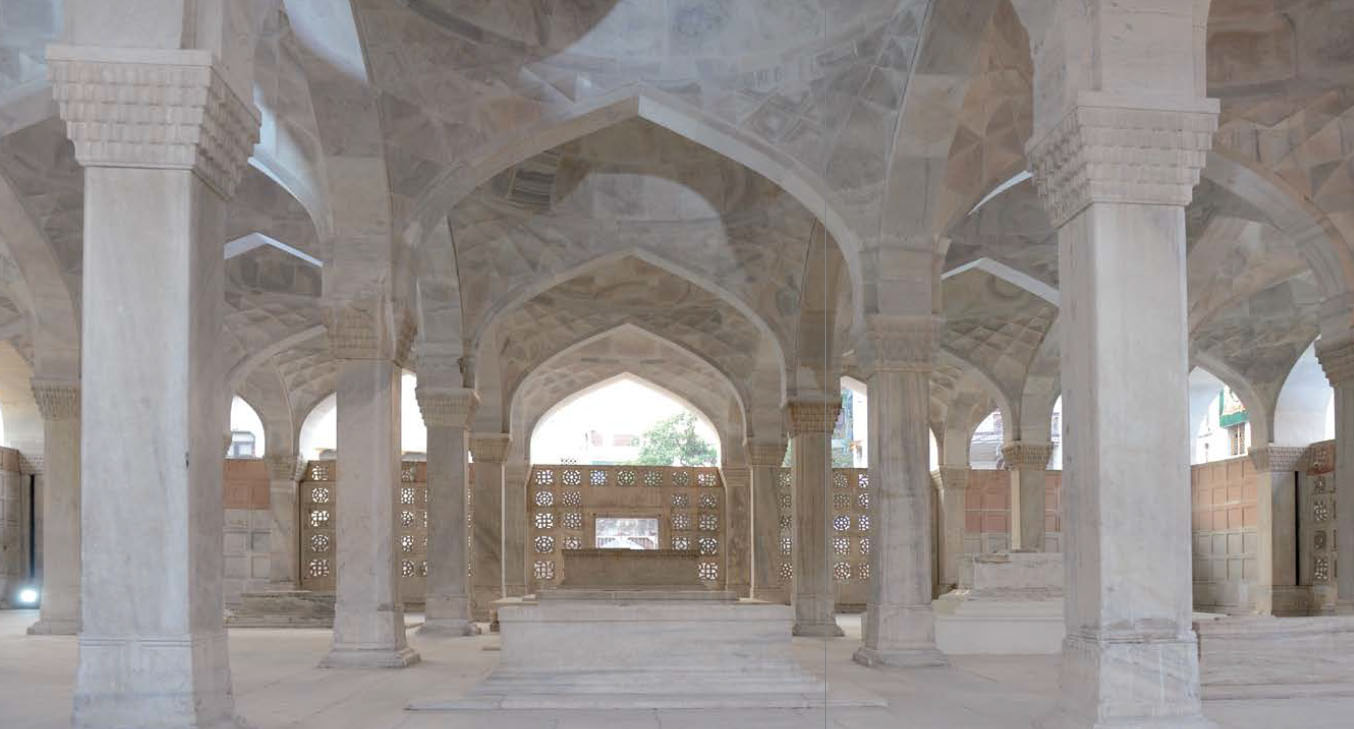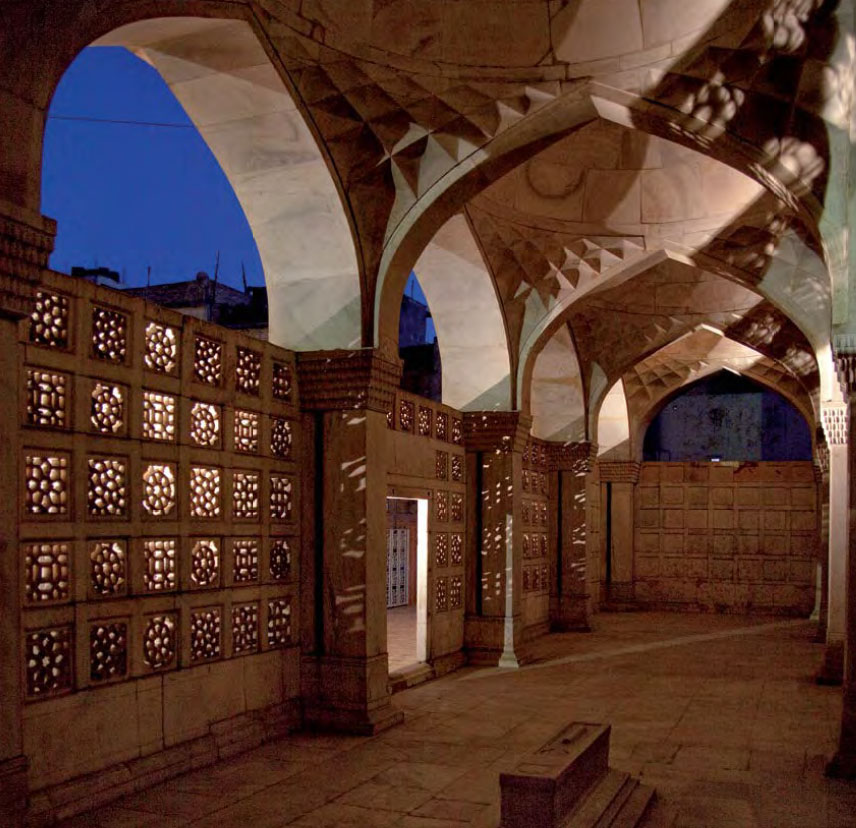The restoration of Chaunsath Khambha, a Mughal mausoleum dating back to the early 17th century, was carried out between 2010 and 2014. The project was part of the Urban Renewal project run by the Aga Khan Trust for Culture in the historic Nizamuddin quarter, where Humayun’s Tomb – a World Heritage site – is also to be found. For this unique project, the 25 marble domes in the tomb were removed and put back together by hand to replace centuries-old damaged iron dowels.
Chaunsath Khambha was built in 1623–4 to serve as a tomb for Mirza Aziz Koka, foster brother of the great Mughal Emperor Akbar. The name reflects the tomb’s architecture: chaunsath (64) stands for the tomb’s 64 marble pillars (khambha). The mausoleum is unique on account of it being built entirely out of marble, with 25 marble domes supporting the flat roof of the structure.
The marble blocks of the 25 domes are linked to one another and embedded in the brick masonry above the domes with iron dowels. The rain water that had collected on the roof over the centuries had severely corroded the iron dowels. This led to them bursting through the masonry in all parts of the mausoleum – domes, arches, façade and even the columns. The mausoleum’s entire structure was thus in jeopardy.
Chaunsath Khambha was built in 1623–4 to serve as a tomb for Mirza Aziz Koka, foster brother of the great Mughal Emperor Akbar. The name reflects the tomb’s architecture: chaunsath (64) stands for the tomb’s 64 marble pillars (khambha). The mausoleum is unique on account of it being built entirely out of marble, with 25 marble domes supporting the flat roof of the structure.
The marble blocks of the 25 domes are linked to one another and embedded in the brick masonry above the domes with iron dowels. The rain water that had collected on the roof over the centuries had severely corroded the iron dowels. This led to them bursting through the masonry in all parts of the mausoleum – domes, arches, façade and even the columns. The mausoleum’s entire structure was thus in jeopardy.
unique architectural design and construction of Chaunsath Khambha as well as the fact that each stone was unique in shape and size, it was agreed that all original stones would be retained. To this end, each of the 25 domes had to be dismantled in order to remove the damaged iron dowels. Such an effort had never been undertaken before anywhere in the world.
Once each stone had been numbered and catalogued, the individual marble blocks were dismantled and reassembled on the floor. The iron dowels were removed and cracks were filled using precisely-fitting stones. It took the stonecutters eight months to successfully repair the first dome using traditional building techniques – thus establishing the methodology for repairing the rest of the mausoleum. This allowed urgently needed repairs to the roof to be taken in hand.
The repairs to the domes were coupled with repairs to the 35cm thick arch stones and the severely damaged diamond-shaped pendentives which support the marble domes. All in all, the repair of the 25 domes has taken almost four years, which amounted to more than 25,000 days of work for the stone craftsmen.
Project: Ratish Nanda, Programme Director at the Aga Khan Trust for Culture
Promoted by: Cultural Preservation Programme of The Federal Foreign Office



